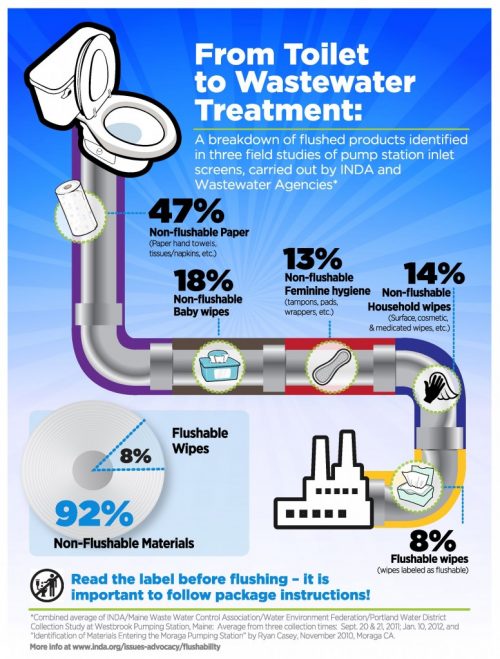They wreak havoc on wastewater treatment plants. From clogging pipes to breaking down equipment, non-woven fabrics cause all sorts of problems for plant operations. Popularly known as wipes, and commonly flushed down toilets, these non-flushable items are often a source of plant overflow.
What can be done to solve this issue? That’s a question that has been asked for years with few helpful answers. Recently, five organizations from both the water and non-woven fabrics industry came together to jointly address the problem. The organizations involved are INDA, the Association of the Nonwoven Fabrics Industry; NACWA, the National Association of Clean Water Agencies; APWA, the American Public Works Association; WEF, the Water Environment Federation; as well as CWWA, the Canadian Water & Wastewater Association.
This collaborative group will focus on how product marketing could be manipulated to create more awareness around the improper disposable of wipes. They want to improve product labeling and consumer awareness on whether non-woven fabrics are flushable and also increase available consumer information available on this topic.
For the future, there is talk of expanding this program to other non-flushable items that routinely appear in wastewater treatments plants, such as paper towels, feminine hygiene products, and cotton swabs.
Read more on the history of what the INDA and similar organizations have done in regards to non-flushable products here.
